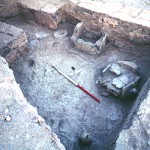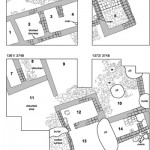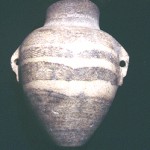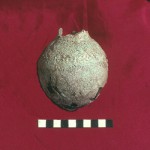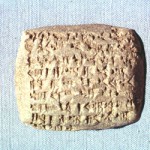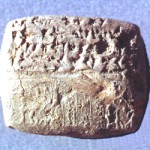Western Syria was incorporated into large, multi-regional empires in the mid-late second millennium BC. First to conquer the Jabbul region was Mitanni, centered in the Khabur area, later to be displaced in the later 14th century by the empire of the Hittites from Anatolia. In this period at Umm el-Marra, there is no evidence of public construction or fortifications, perhaps signaling the site’s subordinate status in this period of imperial domination.
In the Acropolis East, West Area A, and Southeast Area is evidence of a Late Bronze destruction episode including burned buildings with well-preserved household implements, luxury items and other remains. Carbon-14 samples of carbonized barley from a burned room in the Southeast Area yielded five close dates centering on the 14th century BC after calibration, which might suggest a link between the conflagration and the onslaught on western Syria by the Hittite king Suppiluliuma I.
In a Northern Area sounding, excavations in a Late Bronze age house recovered the first cuneiform document to be retrieved from the Jabbul. The Akkadian text concerns the granting of Mitannian citizenship to several individuals, a process conducted in the presence of the Mitannian king Shuttarna II (ca. 1400 BC). The tablet was impressed with the cylinder seal of Shuttarna’s forebear Saustatar, a sealing also known from Tell Brak and Nuzi. Mitannian kings often used the cylinder seals of their predecessors, apparently to emphasize their ties to a revered past.
The very occasional recovery of White Slip II pottery imported from Cyprus in LB contexts at Umm el-Marra indicates at least a minor connection to the sea-borne trade of the eastern Mediterranean. Similarly rare Nuzi ware sherds, characteristic of elite contexts in the Mitannian empire, may imply the occasional presence of higher-ranking households.

